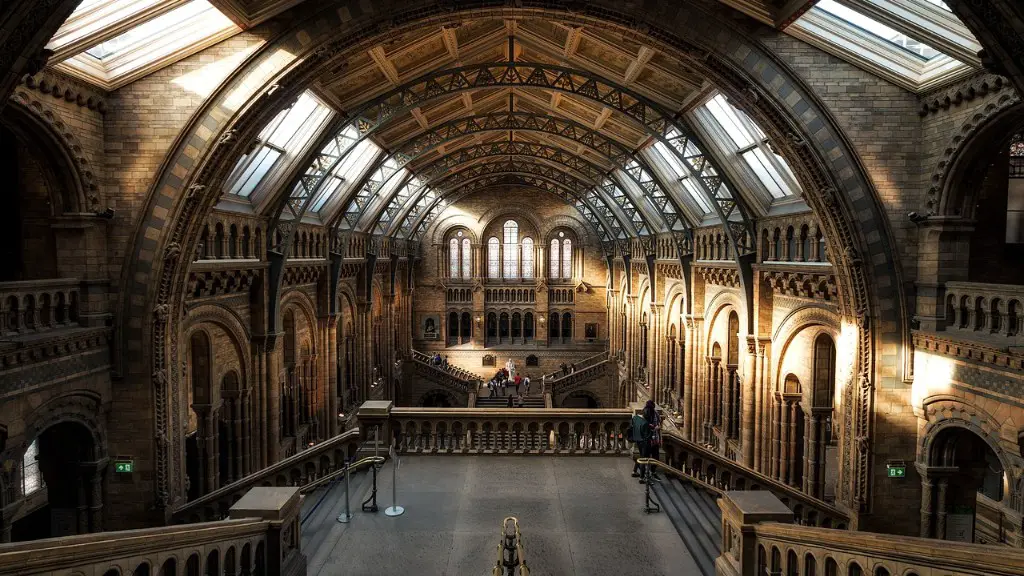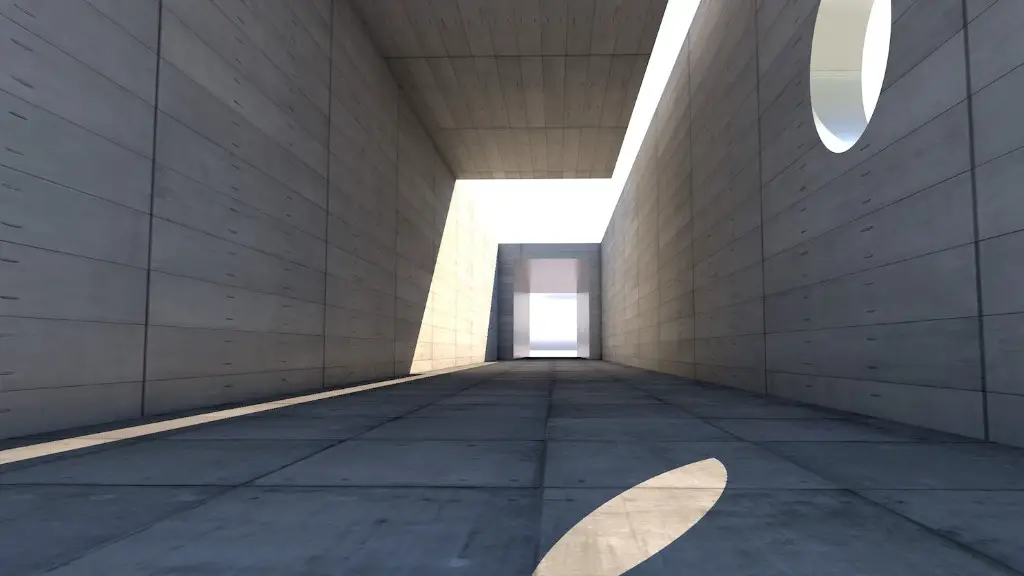Architecture is a field of art and science dedicated to creating a workable and aesthetically pleasing design that is also functional and meaningful. The principles of design applied in architecture often follow a set of precedents established by the style and period of the type of building being constructed. Precedent studies in architecture are the practice of learning from past structures and designs in order to make informed decisions about how to construct a new project.
The basis of the concept is to leverage the traditional building techniques and styles of a certain period or style of architecture in order to create a project that is both beautiful and purposeful. It focuses on learning from the successes and failures of similar past projects in order to move forward with a more sound proposal. Precedent studies involve examining the chronological progression of specific designs in order to gain a thorough understanding of its development and implementation.
In essence, a precedent study is the study of an architectural work or style in order to fully appreciate its design, construction and implications. This practice allows architects to tap into the influence and knowledge of past innovators when designing a new structure. It can serve to build a stronger structure by considering all aspects of the design, both aesthetically and structurally. Precedent studies can help to address questions of function, form and feasibility when designing a new building.
The purpose of a precedent study is to analyze and appreciate both existing and historical structures in order to gain a deeper understanding of how a specific style or type of architecture works. This understanding can then be used to inform the design of a new project. By understanding the design process, architects can be more informed when making decisions about their projects. It can also be used to evaluate the success of an existing building before making any changes.
For example, when embarking on a new project, architects may draw upon the well-documented successes of Ancient Greek and Roman architecture. They can look to the Acropolis or the Pantheon as inspiration for their project. They could draw upon their structure, design, and construction approaches to create something that is both impressive and inspiring. By studying the great works of the past, architects can gain insight into which techniques work and which techniques don’t.
Precedent studies in architecture can be a powerful tool when designing a new space. They are a way to learn from the successes and failures of past projects in order to make informed decisions when designing a new building. They provide insight into the design process, helping architects to make informed decisions about their projects. In sum, precedent studies are a valuable practice that can help to inform the design of a new project.
Functional Considerations
When evaluating a precedent study, there are certain functional considerations that must be taken into account in order to ensure the success of the project. Architects must consider the size and shape of the structure, the types of materials being used, the level of detailing required and the cost of construction. By firmly understanding the structures functional needs, the architect can design an effective and efficient structure.
For example, when building a new apartment complex, the architect must take into account the size and number of apartments, the materials needed to construct the complex and the cost of construction. The precedents of past apartment complexes and the materials used in their construction can provide invaluable insight into what needs to be done in order to make the project a reality. Additionally, the architect must consider the energy efficiency of the structure and how it will impact the environment.
Functional considerations are essential when planning any architectural project. They provide a foundation for the design process and must be taken into account in order to create a successful structure. Precedent studies allow architects to gain insight into the functional needs of a building from past projects.
Environmental Factors
In addition to functional considerations, environmental factors must also be taken into account when understanding a precedent study. Architects must consider the environmental impact of the structure on its surroundings. This includes considering issues such as noise pollution, sunlight exposure, air circulation, and water runoff. By taking into account the environment in which the structure is situated, architects can design a successful project.
For example, when designing a skyscraper that is situated in an urban environment, the architect must consider the height restriction of the building, along with its impact on the surrounding structures and environment. The precedent studies of past skyscrapers provide invaluable insight into what needs to be done in order to create a successful structure. The architect can learn how to maximize the sunlight exposure on the building’s facade, how to create air circulation within the structure, and how to effectively control water runoff from the building.
Environmental considerations are critical when designing a structure. By studying the precedents of past projects, architects can gain insight into how to best approach certain environmental issues. This can help them to design a successful project that is both aesthetically pleasing and efficient.
Social Factors
Social factors are also important when considering a precedent study. Architects must take into account the social implications of the project as well as the impact it will have on its surrounding community. They must consider issues such as access to public spaces, access to resources and the overall impact of the project on its community. By understanding the social implications of a building, architects can design a project that will be welcomed by the community it is situated in.
For example, when designing a new library, the architect must consider the social implications of the project. How will the library impact the community it is in? Is it providing a valuable resource to its citizens? Is it providing access to quality learning materials? Does it offer safe and inviting spaces for people to gather and learn? These are all questions that must be answered in order to create a successful project.
Precedent studies provide invaluable insight into the social implications of a project. By studying the precedents of past projects, architects can gain insight into how to best approach certain design decisions. This can help them to design a successful project that is both aesthetically pleasing and socially beneficial.
Aesthetic Considerations
Aesthetic considerations are also critical when studying a precedent study. Architects must consider the visual appeal of the structure, the details of its construction and its integration into its surroundings. They must consider the types of materials being used and the overall organization of the space. By considering the aesthetic elements of a structure, architects can create a beautiful and inviting space.
For example, when designing a new office building, the architects must consider the types of materials being used, the visual appeal of the building and its integration into its environment. Precedent studies of past office buildings can provide invaluable insight into the design process. The architect can learn from the successes and failures of past projects in order to create a beautiful and inviting space.
Aesthetic considerations are essential when studying a precedent study. Architects must consider the visual appeal of the structure and its integration into its environment in order to create a successful design. Precedent studies provide insight into how to best approach the aesthetic elements of a project.
Planning and Feasibility
In addition to the functional, environmental, and aesthetic considerations of precedent studies, architects must consider the planning and feasibility of the project. This includes issues such as the timeline of the project, the costs associated with the project and the overall feasibility of the project. By understanding the planning and feasibility of the project, architects can create a project that is both successful and cost-effective.
For example, when designing a new hospital, the architects must consider the timeline of the project, the costs associated with the project and the overall feasibility of the project. Precedent studies of past hospitals can provide insights into how these issues should be approached. The architect can use the information from these studies in order to create a project that is both feasible and cost-effective.
Planning and feasibility are essential when studying a precedent study. Architects must carefully consider the timeline, costs and feasibility of the project in order to create a successful design. Precedent studies provide a valuable insight into how these issues should be approached.
Safety and Durability
The last consideration to take into account when studying a precedent study is safety and durability. Architects must consider the safety and durability of a structure in order to ensure its long-term success. This includes issues such as the type of materials being used and the structural integrity of the structure. By understanding these elements, architects can create a project that will stand the test of time.
For example, when designing a new bridge, the architects must consider the type of materials being used and the structural integrity of the bridge in order to ensure its safety and durability. Precedent studies of past bridges provide invaluable insight into how these issues should be addressed. The architect can use this information to create a project that is both safe and durable.
Safety and durability are essential when studying a precedent study. Architects must consider the type of materials being used and the structural integrity of the project in order to create a successful structure. Precedent studies provide insight into how these issues should be addressed.





